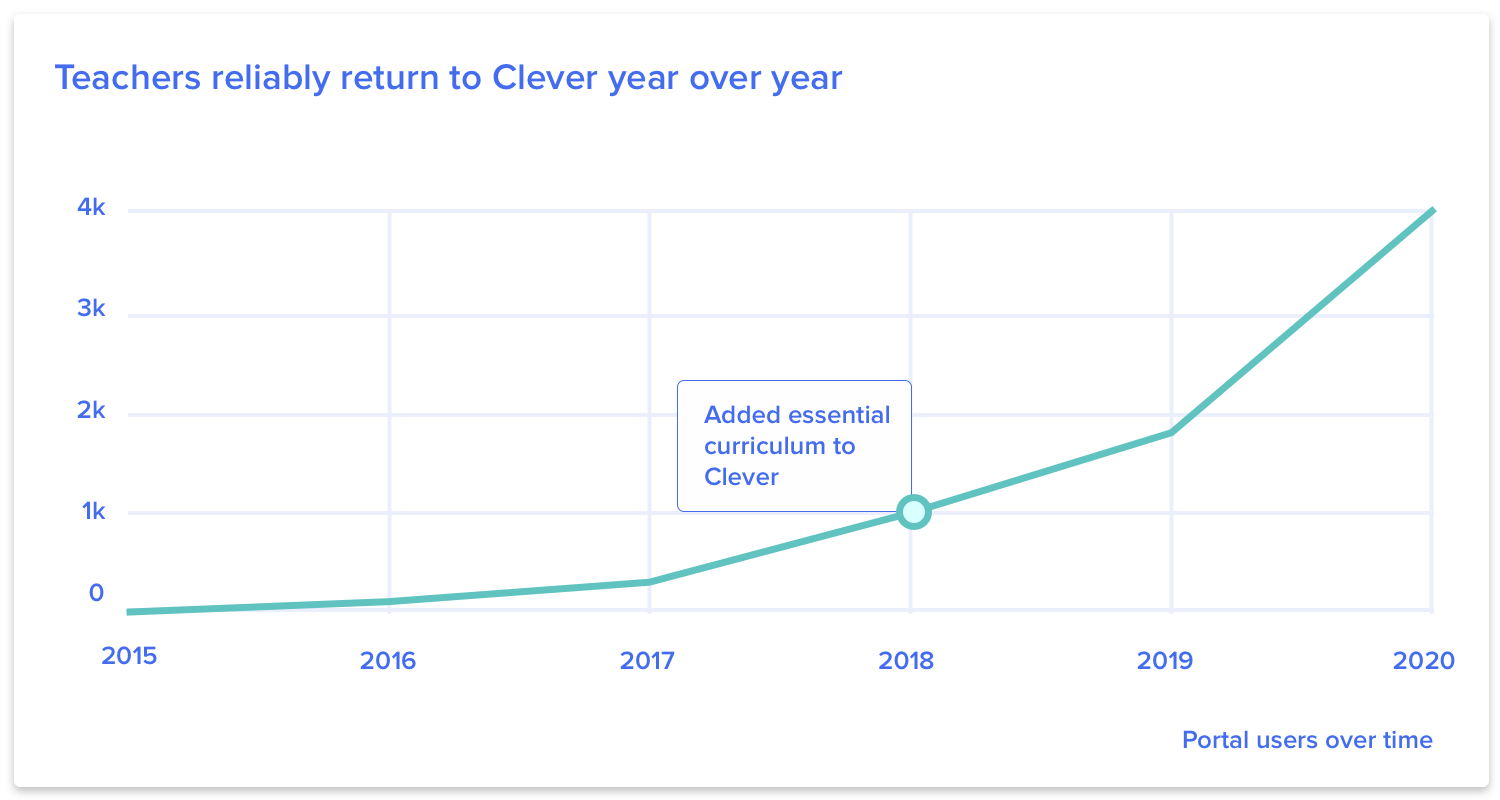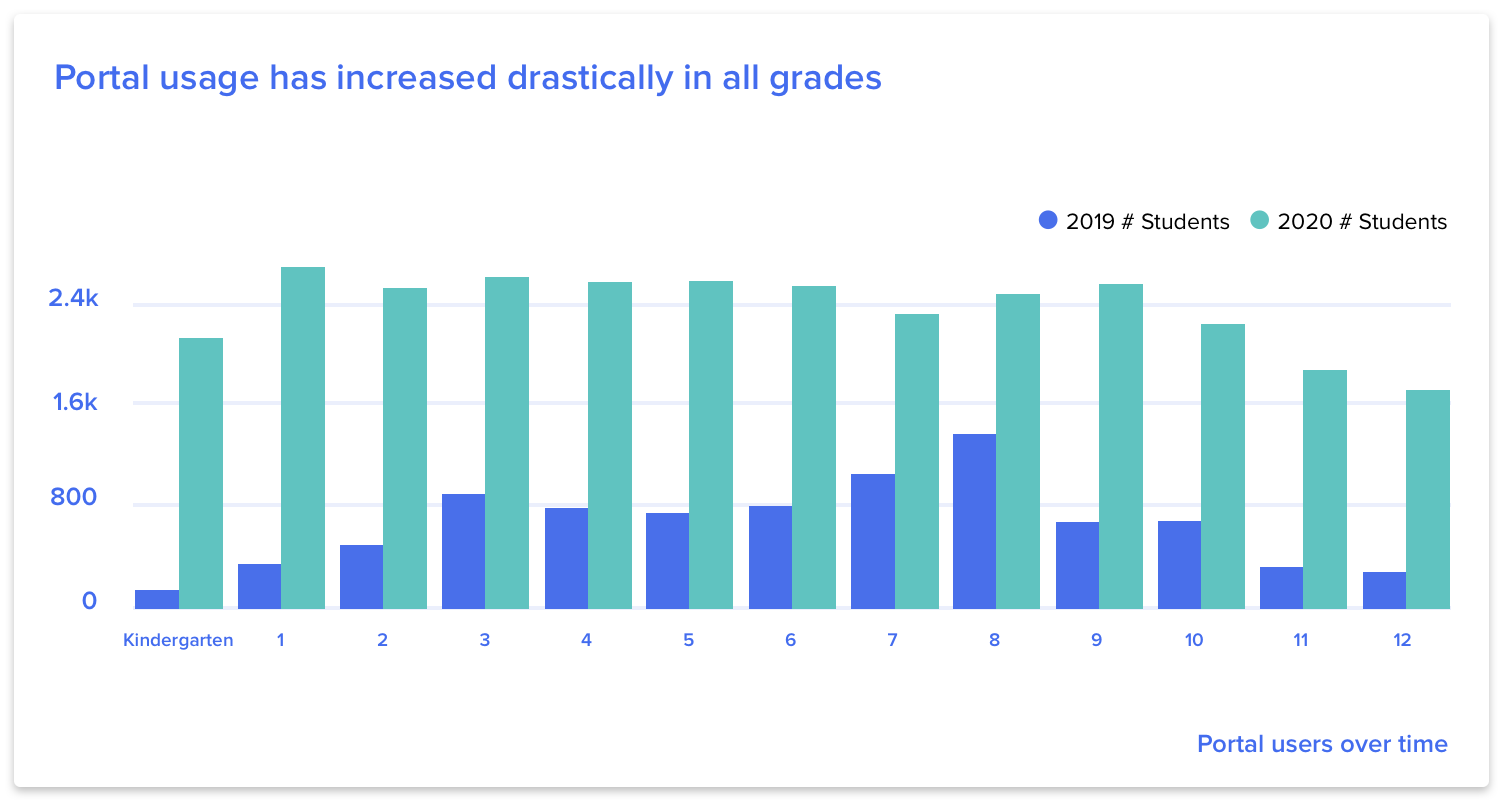Cleveland Metro: How a large school district achieved broad edtech adoption
District staff members of Cleveland Metropolitan Schools share key milestones in achieving rapid adoption of edtech for more than 40,000 of its students and teachers and benefits of using tools like Clever for remote learning models.
With large school districts like Cleveland Metropolitan Schools (CMSD), edtech challenges often boil down to a common theme: Managing dozens of learning applications and connecting a large population of teachers and students to those programs.
While the district initially embraced Clever as a single sign-on solution, CMSD soon experienced benefits beyond streamlining logins across all digital learning platforms. Teachers have more time to dedicate to instruction, staff can use data to inform their edtech purchasing decisions, and going back to school becomes a more streamlined process—especially in a remote learning model.

Teachers spent hours training, managing, and correcting logins
District IT team member and Clever admin Marcus Thompson recalls life before Clever, how frustrating it was for teachers to track down the source of mistakes on students rosters within edtech apps. Each day the CMSD IT department had to deal with messy data from student rosters in edtech apps containing inaccurate or missing student names.
“Before Clever, our application integrations were all over the place,” Marcus said. “Teachers would say, Hey, I’m missing a student here. But when I go into this application, they’re there. No one could determine the root cause because everyone was doing their own thing.”
Change management for teachers and staff
After Marcus solved the issue of students missing from rosters by introducing automated and uniformed rostering for all schools, teachers were sold on using Clever. There were a few moments that accelerated the adoption of Clever throughout the district.
For example, when Cleveland integrated some of its essential curriculum products for teachers, such as Study Island and McGraw Hill, many more teachers across grade levels became familiar with Clever. These integrations in 2018 increased the number of teachers engaging with Clever from 1,000 to 4,000 across the district. Teachers have reliably returned to using Clever each year.

“In our second year using Clever, we added several more things on to it, and teachers were really looking to Clever to be the answer for their applications more and more,” Marcus said. “Teachers kind of live by it now, and they ask when things aren’t in Clever.”
In fact, counting the seven new apps that CMSD has added during 2020, the district has now integrated 80 apps into Clever, helping to make instruction more seamless for teachers and learning more focused for students.
How to be successful in digital instruction, even remotely
Since CMSD so rapidly adopted Clever, there’s now a much smoother transition going back to school. Teachers follow a streamlined process for each class. “We all start at Clever and go to Schoology, and it’s nice. Clever is a savior for the teachers,” said Joe Widman, a CMSD teacher and technology liaison.
As teachers have grown to trust and rely on Clever to streamline their technology usage, they’ve expanded to use other features like Teacher Pages and Announcements. In 2020, about 58% of CMSD teachers customized their digital classrooms in Clever. Joe uses announcements to help students stay informed of essential updates, despite all of the information they are bombarded with daily.
“The kids like Clever Announcements because it means they don’t miss anything,” Joe said.
With Teachers Pages, students appreciate the clarity and routine of seeing all the apps they’ll be using for each class in one place.
While there is a risk during remote learning of having less insight into student engagement, CMSD teachers use Clever to make informed decisions about their instructional planning. With Class Analytics, teachers get a better sense of which apps students are engaging with, which can inform their future instructional decisions.
“The analytics tells us the kids are more active on Study Island or more active on Khan Academy, and then I can assign more work on those because the kids are doing it,” Joe said.
Leaders use insights to invest time and money most impactfully
Managing and sharing program licenses
Because of the district’s size and the autonomous approach schools took to managing their technology, the district was overpaying for duplicate subscriptions. In some cases, one school invested in a license for an edtech app that would cover users at another school, too. However, there was no easy way for these schools to exchange that information.
After the large-scale adoption of Clever throughout the district, though, school and district leaders gained a clear picture about the edtech apps that they were paying for and saved money by avoiding duplicate purchases.
Building usage reports and integrations
From an instructional perspective, staff had to do guesswork or time-consuming investigation to determine which edtech apps students were using, and how teachers might direct their future instructional plans. Each edtech app had its own analytics, so staff had to manually log into each app in order to get usage data and take on the time-consuming task of building their own reports.
Thanks to Clever Analytics, Cleveland staff goes to one place for an easy-to-use report that can share information about edtech usage across all schools. This makes determining students preferences and planning future instruction a streamlined, data-informed process.
As the Systems Admin, Marcus used to spend the majority of his time building integration for edtech applications, and now he has cut this task down to 10% of his time. This has allowed more time to focus on enterprise-level integrations and other high-level architecture projects. “Clever just made my life so much easier,” Marcus said.
Getting insight on edtech spending
In addition to saving time, Clever helps CMSD direct funding to the apps that students and teachers use most often. This means that they can use these savings to expand access to the tools that teachers and students rely on.
With Clever Analytics, Marcus gets a clear picture of student and teacher edtech usage, making the decision-making process for renewals and cancellations easier.
“Some apps become redundant,” Marcus notes. “There are a couple of applications that we just haven’t renewed because we saw no one was logging into them, which saves us money.”
Every Back to School gets easier when everyone is on Clever
When the new school year begins, teachers are eager to dive into the learning activities they’ve planned; neither teachers nor students want to start a new school year by reviewing boring instructions and login procedures.
Each fall, CMSD teachers would send home login information for every tool students were using. With students using several different apps each year, this meant that they’d have to remind students of the login process.
The number of edtech apps used and the unique login instructions for each app brought additional challenges to teachers, too. Teachers had to manage trouble-shooting the sign-on process for students and parents when they themselves may not have felt too comfortable using edtech.
Joe recalls the amount of time spent, ensuring that all students could successfully access the edtech they needed before instruction could begin. “Before, as a teacher, I took so much time explaining this program, explaining that program,” he said.
While the beginning of the school year is a stressful time for students and teachers, Joe has noticed a compounding benefit of using Clever for everyone in Cleveland.
“The nice thing is that when we came back to school, guess what they used last year? Clever. So it’s one less instructional component or stress on the teachers.”
When you think of the time and preparation that goes into setting up for Back to School, then look at the rapid adoption of streamlined tools like Clever across all grade levels, it’s remarkable. The number of CMSD students logging in to Clever increased 3.5x between 2019 and 2020. Now, more than 30,000 students are logging in and finding all of their programs in one place.

Like the students, parents of young children had to manage logging into many different platforms to support their children’s learning. With multiple kids in a family, this could quickly become overwhelming for parents.
For a busy working parent, easy access to a platform can be the difference between staying engaged in their kids’ education in the moment or saying they will check things later when they have more time. By simplifying and streamlining the login process, Clever empowers Cleveland parents to take a more active and informed role in their children’s learning.
Best practices for approaching edtech partnerships
For large districts looking into adopting new edtech partnerships like the one with Clever, CMSD’s CIO Curtis Timmonds encourages them to ensure that their technology and business goals are clearly defined as they enter their decision-making process.
At the school and district administration level, CMSD leaders faced the challenge of determining if their district technology usage aligned with their overarching goals. According to Curtis, the administration had to grapple with questions like:
- Is the budget going towards the tools that will support student performance goals?
- Is the usage of EdTech supporting goals related to specific student populations?
- Is teacher usage of EdTech intentionally aligned with meeting these district goals?
“When we first adopted Clever, our goals were more narrow,” Curtis said. “Eventually, then you can embrace more that you can do with Clever for your organization.”
Through a gradual yet consistent expansion of usage, Clever has transformed the way that CMSD achieves e-learning. “Clever has become our gateway into learning,” Curtis said. Marcus echoes Curtis’s sentiment.
In 2020, 65% of U.S. K–12 schools are already learning with Clever. And we’re growing quickly with over 22 million students and teachers logging in monthly. To get your school district all-in on Clever, reach out to your Clever Account Manager.

More to read

January 22, 2024
Implementing school security tools with a team of oneClever IDM revolutionizes school security by simplifying password management, reducing IT support tickets, and streamlining operations. This partnership empowers a K-12 leader in Wisconsin to efficiently implement changes, boost security, and confidently embrace broader technology initiatives.

January 12, 2024
K-12 Administrator guide to evaluating edtech vendor securityDiscover key steps to select edtech vendors with a cybersecurity focus, bolstering your school's protection of student data.

November 29, 2023
Layered security and LMS interoperability advancements announced at Clever CIO eventProduct updates to Clever to support K-12 education technology leaders in planning, budgeting, and making decisions about educational technology.

















